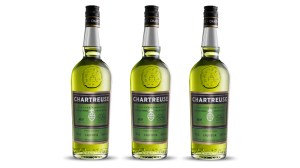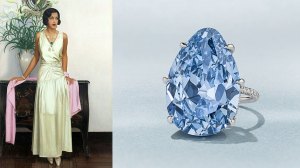The Champs Élysées.
If you have even a passing familiarity with the famous boulevard in Paris, I suspect I know what’s happening in your brain when you hear its name. The cultural idea of France is already imbued with refinement (why every other beauty product, no matter how cheap or shitty, has half its label in French), but that goes double for Paris, and even more so for what has been called “the most beautiful avenue in the world,” the Champs Élysées. No other two words so fully represent the grandeur, sophistication, and elegance of France. Even saying it feels refined. And in the case of the Champs Élysées , all of this is intentional.
A Champs Élysées is a sour with a little bit of the inimitable French liqueur, . It first comes to us from a recipe book published in 1925 called Drinks—Long & Short by Nina Toye and A.H. Adair, and this origin helps us understand the intention behind the drink. Toye was an American novelist and presumably helped with the writing, while Adair was the life and business partner of a French chef named X. Marcel Boulestin, and was responsible for the drinks at Boulestin’s restaurant—the book, as self-described, contains “the recipes of the nectar which Mr. Adair dispenses at that newest and most intriguing of restaurants for which M. Boulestin purveys the ambrosia.”
Monsieur Boulestin, a French chef working in London, writes the preface, perhaps my favorite opening to a book ever written: “I should state here, now, without any further delay, and emphatically, that, as a wine drinker, and a gourmet, I disapprove of cocktails.” He then goes on that he really disapproves of is British cocktail culture, and that he nonetheless appreciates the drinks themselves for their transportive effect. “In London,” he writes, “on a chilly summer evening, cocktails are une nécessité, and their exotic charm remains untouched,” closing with the idea that cocktails can make it feel like you’re traveling, even when you haven’t moved: “The explorer stays at home.”
We linger on this origin to set the stage. A French chef in London, who disapproves of cocktails broadly, but believes in their ability to transport you to a different time and place. His barman, listing the recipes of that chef’s restaurant. What’s in a name? In their book, a with Chartreuse was called a “Biter,” a rum sour with Chartreuse was called an “Eclipse,” but a Cognac sour with Chartreuse was a Champs Élysées. The boulevard was already world famous by this point—you don’t use that name for a drink unless it really earns it.
At its best, that’s what the Champs Élysées tastes like—like walking the boulevard early summer, the sunlight cascading through the chestnut trees. It is by turns refreshing and complex, visceral and cerebral, depending on how much you feel like thinking about it at any given sip. It is still, at its 100th birthday, liquid savoir faire—deep with Cognac, snappy with citrus, and enigmatic with Chartreuse. Put another way: If the cocktail had a label, it would be half in French.
Champs Élysées
- 1.75 oz.
- 0.75 oz. lemon juice
- 0.5 oz. simple syrup
- 0.25 oz. Green Chartreuse
- 2 dashes Angostura Bitters
Add all ingredients to a cocktail shaker with ice and shake hard for 8 to 10 seconds. Strain up into a cocktail glass or coupe and garnish with a lemon peel
NOTES ON INGREDIENTS

Chartreuse
Cognac: In general, VSOP or older Cognacs are what you want for cocktails, and that’s never been truer than it is here. The depth of the Cognac is the anchor of this drink, and without it (a younger VS Cognac for example) it becomes unmoored. My go-tos in this space are Hine Rare VSOP and Remy Martin VSOP or 1738, but that’s just my experience: I suspect most if not all VSOP Cognacs will fit the bill here.
Simple Syrup: You absolutely need simple syrup: If you added enough Chartreuse to counter the tartness of the lemon on its own, the result would be undrinkable. To make simple syrup, combine a half cup of warm or hot water with a half cup of white sugar, and stir until the sugar dissolves. If the water is room temperature, this will take three-ish minutes. If it’s hot, it’ll take 20 seconds.
Angostura Bitters: Strictly necessary. Angostura is the glue that unites the Cognac and Chartreuse.
Green Chartreuse: Chartreuse commonly comes in two flavors, Green and Yellow, and annoyingly, the original recipe doesn’t specify. The cocktail is swept up five years later in Harry Craddock’s Savoy Cocktail Book, and even though his book calls for a specific color of Chartreuse 20 different times (and Craddock, being a world class pro, should absolutely know better), he also abdicates the responsibility. This accounts for some intrepid bartenders changing the Chartreuse to the Yellow variety and then wrestling with it. This is an honorable attempt, but most of us conclude that Green Chartreuse is the way to go, offering that distinct, persistent herbaceousness that is the liqueur’s telltale signature.
In the recipe above, I only use a quarter ounce of Chartreuse. This is unusual—most people do a half ounce at least. My problem is that, frankly, I don’t think a half ounce tastes very good. The Chartreuse dominates. Now, I love Chartreuse as much as anyone, and there are certainly some cocktails out of which the Chartreuse can radiate (the & the , for starters) but I don’t believe the Champs Élysées should be one of them. When this drink tastes the best to me is when the Chartreuse is a whisper, a watermark on the experience, the aforementioned leafy greenness of the boulevard.
If you insist on making this a Chartreuse-forward cocktail, my recommendation is to add an egg white, which helps neutralize the tannins in the Cognac and absorb some of the more jutty eccentricities of the liqueur.
Authors
-

Jason O’Bryan
Jason O’Bryan has set up a professional life at the intersection of writing and cocktails. He’s been managing cocktail bars for the last twelve years, first in Boston and now in San Diego, where he’s…
Credit: robbreport.com











